What Are Antioxidants and Why Do We Need Them?
Every magazine article and tv commercial speaks about antioxidants and their seemingly miracle-working qualities. What are antioxidants really capable of and why do we need them? We take a little closer look.
Atoms, which make up molecules, are at the center stage of every chemical reaction that takes place within the body. To undertake ordinary chemical reactions, molecules should have a balanced charge. Balance in the molecules means everything is running smoothly, which translates to good health. The trouble begins when some atoms acquire an extra negative charge, transforming them into free radicals.
The free radicals roam the body looking for a balanced atom they can snatch an electron from to balance their charge. This solves the atom’s problems but creates another unbalanced molecule (free radical). As the free radicals increase in the body, many issues start to occur, including unhealthy chemical reactions and uncoordinated body functions. The resulting chemical stress can lead to diseases such as cancer, arthritis, respiratory and heart diseases. As long as there are free radicals in the body, the chain reaction continues, causing more chemical imbalances.
What is an antioxidant?
The damage caused by free radicals is known as oxidative stress. To counteract the oxidative stress, you require antioxidants. These are atoms whose work is to give the radical atoms the electrons they need to balance the charge. When there are enough antioxidants in the body, free radicals do not need to steal atoms from other atoms, breaking the chain.
Antioxidants that give away their electrons become oxidized so the radical molecules can gain balance and stop damaging the cells. Their mission is to find free radicals and prevent the reaction and formation of new radicals.
The key to chemical reactions is that they take place in the atoms, the core or foundation of the cells that make up the body organs. If the chemical reactions are altered in the cells, the entire body will react differently.
Origin of Free Radicals
Inhaling pesticides, household cleaners, smoking, radiation, alcohol consumption and exposure to industrial waste can expose you to free radicals. Processed foods, sugary foods, some medications, and emotional stress may raise the levels of free radicals in the body. This means that you need to take care of your diet, understand the chemical composition of prescribed drugs and steer away from radiation therapy if possible.
To ensure the body’s supply of antioxidants outnumber the free radicals, limit chemical exposure and consume foods high in vitamins and minerals. In fact, we recommend that you fill your plate with all colors of food. This ensures you get all the required nutrients to fight off the free radicals.
How do you get more antioxidant power?
Diet is one of the most important considerations. As you will realize, you cannot prevent the total formation of free radicals or oxidation because these are some of the byproducts of the body processes. Supplements and foods rich in minerals and vitamins are vital in achieving the optimal power to clean the body and stay healthy. Vitamin C is one of the vital nutrients 
To boost the protective power, you should make a conscious decision to eat foods high in antioxidant power. These include whole grains, fruits, and vegetables. It is important to note that how you prepare your meals can preserve or destroy their potency or ability to fight off destructive elements in the body. Deep frying food leads to oxidation and breakdown of nutrients and so does overcooking. Cooking over low heat ensures all the nutrients stay intact.
Stick to a healthy diet and ensure you include foods rich in Vitamin C, A, E, lutein, flavonoids, selenium, and lignan. As noted earlier, vitamin C is the best antioxidant, so make sure you eat foods rich in the vitamin, such as citrus fruits, strawberries, and green leafy vegetables.
If you are worried about oxidation effects on your body, find solace in the fact that most bodily organs have a natural way of protecting themselves from this dangerous process. They can produce chemicals to fight oxidation and protect their cells from free radical damage. Being aware of the effects free radicals can have on your body can help you make better diet and lifestyle choices.
If you have questions about antioxidants in your body, contact our office today!
Lear MorePatch Testing for Contact Dermatitis

Allergic Contact Dermatitis
Allergic contact dermatitis is an immune response to an allergen. It can be itchy and can also make the skin dry, flaky, or scaly. However, the symptoms associated with this allergic reaction depend on your skin’s sensitivity. This substance may bring about other symptoms including oozing blisters, redness, leathery appearance, burning sensation, hives, sun sensitivity, and swelling.
Patch Testing and Why It’s Necessary
If you already know what you’re allergic to, that’s great! It will be much easier for you to avoid these chemicals and ingredients. However, if you came in contact with an allergen by accident, it is best to consult with a dermatologist to get the skin treatment you need. For those who suddenly develop patches of dermatitis due to unknown causes, patch testing is necessary.
Metals, leather, rubber, and cosmetics, for example, contain a number of chemicals that can cause allergic reactions. Through patch testing, you and your doctor will be able to identify the allergen. This will help your dermatologist determine which treatment is right for your skin and will be able to help you avoid the allergen in the future.
How Does Patch Testing Work?
An experienced dermatologist will perform the patch test. During the test, small amounts of certain substances are applied to your skin and secured with hypoallergenic tape. These are usually placed on the upper back to ensure they are not disturbed. You will need to come back after 48 hours to get the patches removed. At this time, your dermatologist will do a thorough examination of your skin’s reaction to the substances. Two additional days later, the specialist will examine the spots again to see if there is any delayed reaction.
Dermatologists have a standard set of substances they test on individuals with suspected Allergic Contact Dermatitis. This includes Balsam of Peru, benzocaine, lanolin or wool alcohols, rosin, rubber accelerators, quaternium-15, formaldehyde resin, formaldehyde, p-tert butylphenol, plants, paraben mix, paraphenylenediamine, nickel, neomycin, fragrances, imidazolidinyl urea, ethylenediamine, cobalt, epoxy resin, clioquinol, and chrome. This list includes additives in leather, ointments, clothes, and other items we come in contact with on a regular basis.
Please note that if your dermatologist suspects other allergens, more patches will be added for testing. This can include substances that you come in contact with in your workplace or substances contained in your specific makeup or creams. Bringing in samples of the products you use would also be useful to your doctor, especially if you suspect one of these products is causing the allergic reaction.
Test Results
Once the test results are in, your dermatologist will be able to give you details on what caused your recent allergic reaction. Your dermatologist will give you advice on how to avoid the substance you are allergic to. If the results reveal that you do not suffer from allergic contact dermatitis, you will be able to rule it out and your doctor can proceed with other tests to determine what is causing the skin irritation.
Irritant Contact Dermatitis
If an irritant caused the contact dermatitis, the symptoms are slightly different. This can include skin blistering and cracking because of extreme dryness, stiff or tight skin, swelling, ulcerations, and open sores. This form of contact dermatitis is caused by skin injuries due to environmental factors, chemicals, or friction. The severity of the condition can vary depending on the strength of the irritant, frequency or length of exposure, and skin susceptibility.
Solvents you have come in contact with including detergents, metalworking fluids, adhesives, acid, alkalis, friction, and water can also cause it. Sometimes, two or more of these irritants act together in irritating the skin.
Anyone can experience irritant contact dermatitis if they come into contact with an irritant. However, those who suffer from atopy (a predisposition to allergic reactions) are more susceptible to the condition.
Testing for Irritant Contact Dermatitis
Because this condition can coexist with allergic contact dermatitis, your dermatologist may decide to perform the test to rule this out. The rash typically heals on its own as long as you avoid exposure to the irritant, but special treatment is available if needed. Be sure to contact your dermatologist to get the right treatment for the condition.
If it’s necessary that you handle the irritant again, make sure to cover up and protect your skin. However, try to avoid them altogether if possible.
Patch testing is important to prevent and treat redness, irritation, and itching caused by contact with an allergen or irritant. If you think you may be experiencing contact dermatitis or would like to prevent it, contact us today.
Lear MoreWhy You Should Use Sunscreen and How to Find the Best Kind for You
 Spring means sunshine and sunshine means outdoor activities. While soaking up the sun has its benefits, such as providing the body with a natural source of vitamin D, it is important to use caution when spending extended periods of time outside. The ultraviolet (UV) rays from the sun can be very damaging to the skin. In fact, UV rays from the sun are directly responsible for skin conditions such as premature aging. sunburn and skin damage that can lead to skin cancer.
Spring means sunshine and sunshine means outdoor activities. While soaking up the sun has its benefits, such as providing the body with a natural source of vitamin D, it is important to use caution when spending extended periods of time outside. The ultraviolet (UV) rays from the sun can be very damaging to the skin. In fact, UV rays from the sun are directly responsible for skin conditions such as premature aging. sunburn and skin damage that can lead to skin cancer.Tips for Finding the Best Sunscreen for Your Skin
The technology used to make sunscreens is constantly evolving. Today, the best kinds offer fuller protection against both UVA and UVB rays. Some scatter the UV rays and others absorb them before they get to the skin. In sifting through the broad spectrum of sunscreens, ensure the sunscreen has:
- An SPF of 15 or higher to protect against UVB rays
- Titanium dioxide, ecamsule, avobenzone, oxybenzone, zinc oxide, or sulisobenzone among the ingredients as they indicate protection against UVA rays
- Sweat and water resistance
In addition to ensuring the sunscreen has the right properties, it is important to use sunscreens as directed in order to gain maximum benefits. When using sunscreen, keep these application tips in mind:
- Apply the sunscreen at least 15 to 30 minutes before going out into the sun
- Lather properly- not using enough sunscreen can leave your skin open to the harmful rays from the sun
- Remember those spots everyone forgets, such as the ears, feet, back of the legs, bald spots and you should even use UV-protective lip balm for your lips
- Reapply your sunscreen at least every 2 hours
- Use your sunscreen even on overcast days
The Importance of Skin Protection and a Skin Care Routine For Healthy Skin
 The skin is the body’s largest organ and our first point of contact with the world around us. Often times, it is also the first place that our health care and self-care practices (or lack there of) can be seen. It is true that there are positive general care practices that can help us naturally maintain healthy skin. These include:
The skin is the body’s largest organ and our first point of contact with the world around us. Often times, it is also the first place that our health care and self-care practices (or lack there of) can be seen. It is true that there are positive general care practices that can help us naturally maintain healthy skin. These include:- working out
- drinking lots of water
- reducing the intake of processed foods and sugars
- consuming more fruits, vegetables, lean meats and whole grains getting adequate sleep
- managing stress
- Wearing sunscreen: Overexposure to UV rays is one of the most common causes of skin cancer and skin damage. As we are taught at an early age, sunscreen is a very important part of combating the sun’s rays. As long as the sun is out, your sunscreen should be out. An over-the-counter sunscreen of SPF 15 or more is a great place to start. And remember, keep applying!
- Donning protective gear: In addition to wearing sunscreen, protective gear like umbrellas or clothes with sleeves, can help to form a buffer between the sun’s rays and direct contact with the skin.
Tips For Rosacea During Spring
Spring has sprung and so has flare-ups from rosacea. Many patients have difficulty with this common skin disease when the seasons change, but the changes from winter to spring seem to be the worst.
Springtime is the season where rosacea is most aggravated by the increased sun, wind exposure, temperature change, and outdoor activity. It’s essential for rosacea patients to know what triggers their condition, learn how to avoid the triggers and follow a rigorous skin care regimen when flare-ups occur. Here are some skin tips to keep your rosacea under control as the weather warms.
1. Medical Therapy
Sticking with medications and treatments recommended by your dermatologist. Oral antibiotics, as well as those applied to the skin, along with other prescribed topical treatments, can go a long way towards keeping a flare-up in check. Considering undergoing laser and other light treatments during this time.
2. Proper Sun Protection
If your rosacea is exacerbated by sun exposure, make sure you wear a wide-brimmed hat whenever you are outside. Soaking up those rays after a long winter is tempting. Make sure that you always wear sunscreen that is rated SPF 30 or higher that blocks both UVA and UVB rays. Try a pediatric formulation or one for sensitive skin if sunscreen tends to irritate your skin.
3. Shield Yourself from Wind
Spring brings a lot of windy days. Whenever possible, trying to shield your skin as heavy winds trigger outbreaks in more than half of patients.
4. Moderate Exercise
It’s also tempting to go full out with exertion after a cold winter, but heavy exertion often triggers flare-ups. Try low-intensity exercise at more frequent intervals. When not exercising, avoid situations with high heat and/or humidity.
5. Lifestyle Considerations
Take care of allergies and colds as these conditions can cause flare-ups along with other conditions. Seek medical attention when appropriate. Limit stress and anxiety when possible and if certain foods tend to trigger flare-ups, also limit their intake when other conditions are present.
Lear MoreJump Start Your New Year’s Resolution For Healthier Skin Today
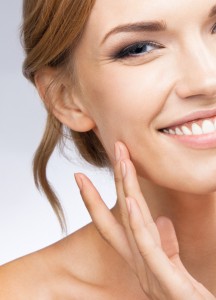
Winter has a way of taking its toll on skin with its lack of humidity and our use of dry heat to compensate for this season’s cold temperatures. We often overcome this dryness through the use of moisturizers and humidifiers, but there are some skin conditions that require the touch of a professional dermatologist.
Skin cancers, unwanted tattoos, varicose veins and age spots are just some of the skin conditions for which dermatologists prescribe treatment every day. They also advise patients in the best methods for treating psoriasis, eczema and acne while offering laser hair removal services. If you have a skin condition that has been bothering you, maybe you should consider scheduling a consultation with a board certified dermatologist.
You really can jump start your New Year’s resolution for healthier skin with a visit to a skin care clinic. Regardless what it is you hope to achieve through dermatological treatment, it is absolutely imperative that you choose a medical team that specializes in the treatment in which you are interested.
For instance, you may want to get a jump on summer by taking advantage of professional cosmetic services that include laser treatments to remove a tattoo that seemed like a good idea at the time, but embarrasses you now. By having this tattoo removed now, before warm weather gets here, you will be ready to show off beautiful skin again. Of course, you may be proud of the image on your skin, and if so, why not show it off in all its glory by having laser hair removal to remove distractions.
Not everyone is satisfied with the way they look, and this is particularly true for anyone with visible lines and wrinkles. There is no reason for these signs of aging to cause distress when there are options for getting rid of them. Chemical peels, Dermaplane and Dermasweep are three procedures that can dispatch lines and wrinkles and make you look the way you feel inside again.
If you have acne, this year’s resolution should be about clearing it up so you can feel better about yourself. Seeing a dermatologist is the first step in getting this done because a qualified skin specialist can help you treat the underlying cause of the condition by teaching you about what causes it and prescribing the most appropriate skin care treatment.
Healthy skin is one of the most important gifts you can give to yourself. Choosing now to jump start your New Year’s resolution for healthy skin by visiting a dermatologist will allow you to enjoy the skin you’re in for the rest of 2016.
Lear MoreSimple Steps To Treat Sunburn

The best thing you can do for your sunburn is to keep it moisturized. Use a cool, damp towel when you can to reduce the heat in your skin and to alleviate a bit of the dryness from the sunburn. It’s also a good idea to make use of a moisturizer that has aloe vera as a primary ingredient to promote a bit of healing. Neither of these solutions is going to provide perfect relief from the pain, but they will help you to get back to normal a bit faster than would otherwise be possible.
You also need to protect your skin once it has been sunburned, as you can still cause damage even when you’re dealing with the condition. That means wearing clothing that covers the burn even if it’s uncomfortable – it’s not that pleasant, but it will help you to get through the period of pain more quickly.
The best way to deal with a sunburn is to make sure that it never occurs in the first place. Always go out of your way to wear sunscreen and to wear a hat that will protect your face if you are going to go outside. Remember, sunburn can occur even if you think that it is cloudy or overcast – the sun is still there, after all, and so are its harmful rays. Play it safe in the sun, and you should not have to deal with the pain of sunburn at all this summer.
Lear More
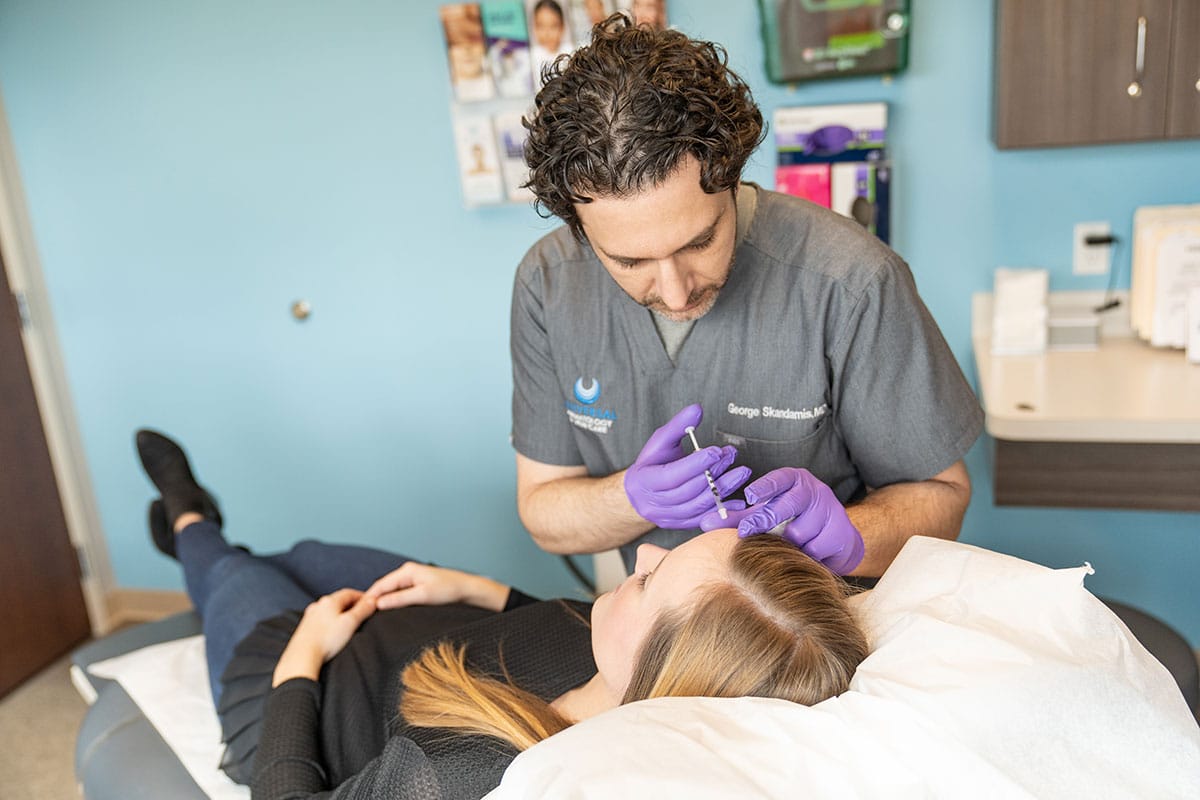 Our Dermatologists
Our Dermatologists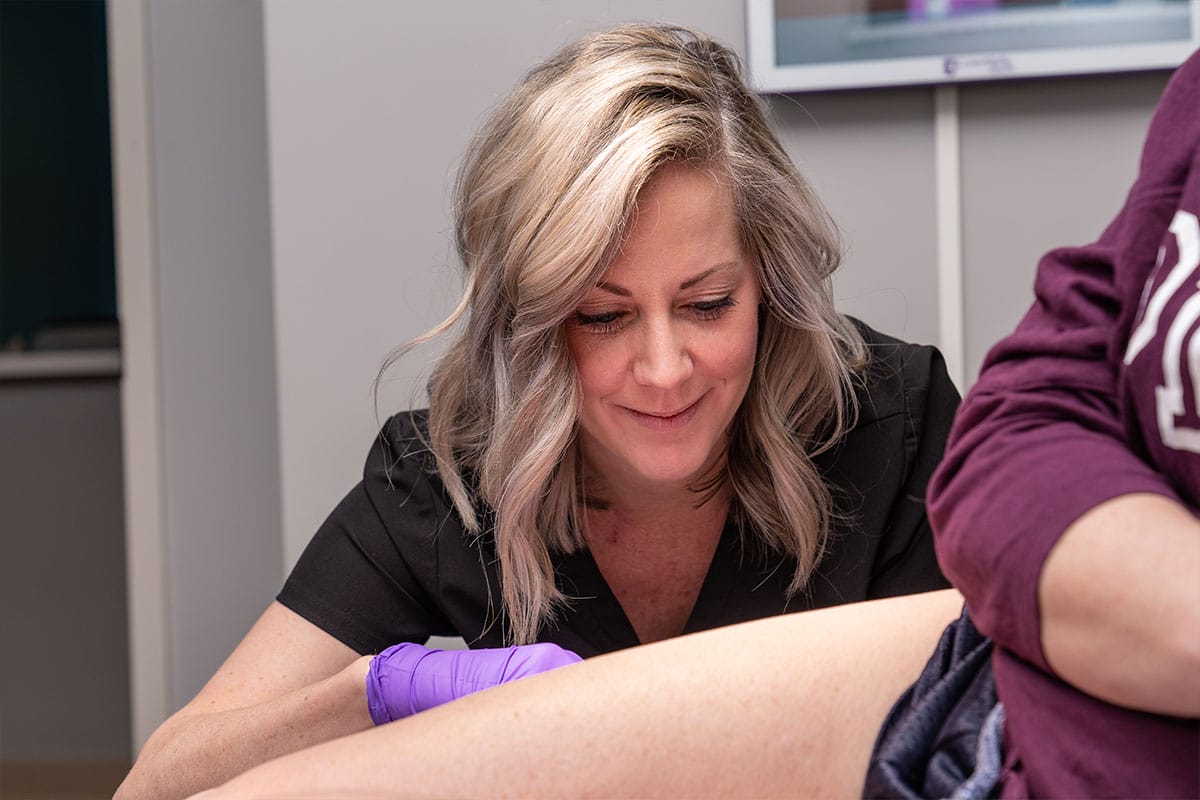 Our Providers
Our Providers Our Staff
Our Staff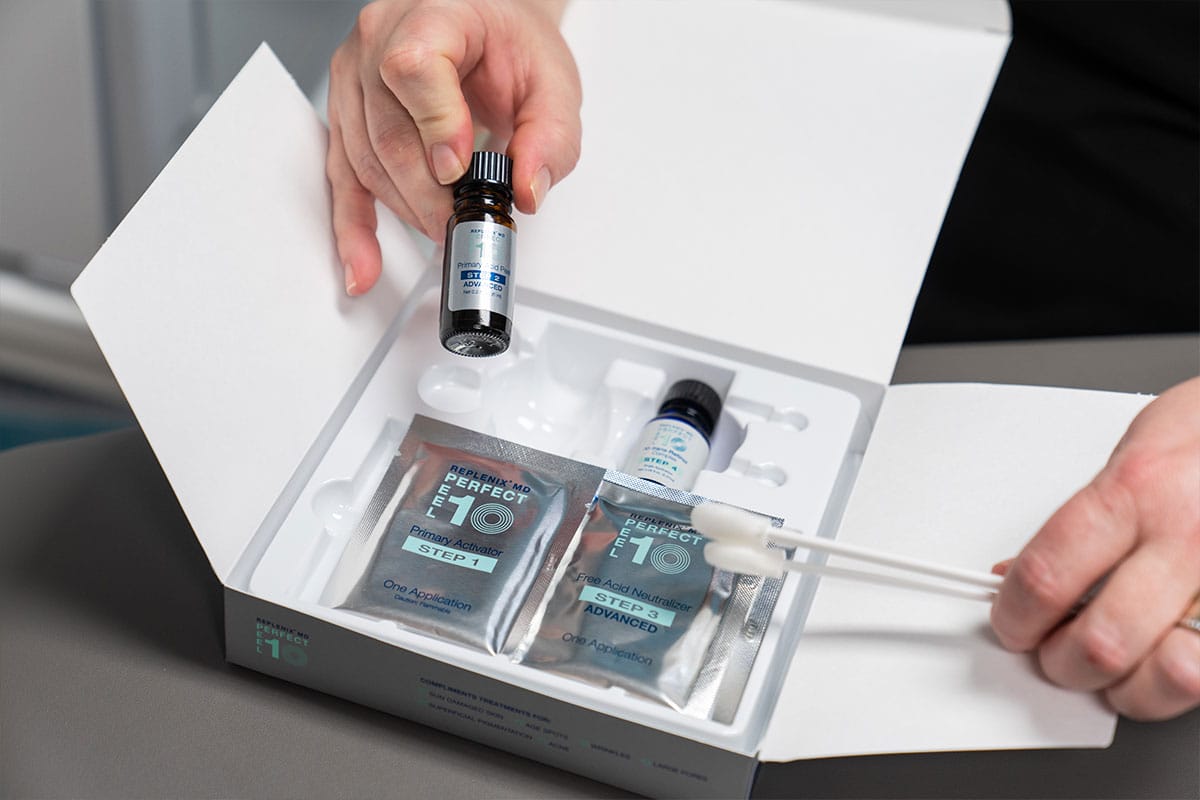 Specials
Specials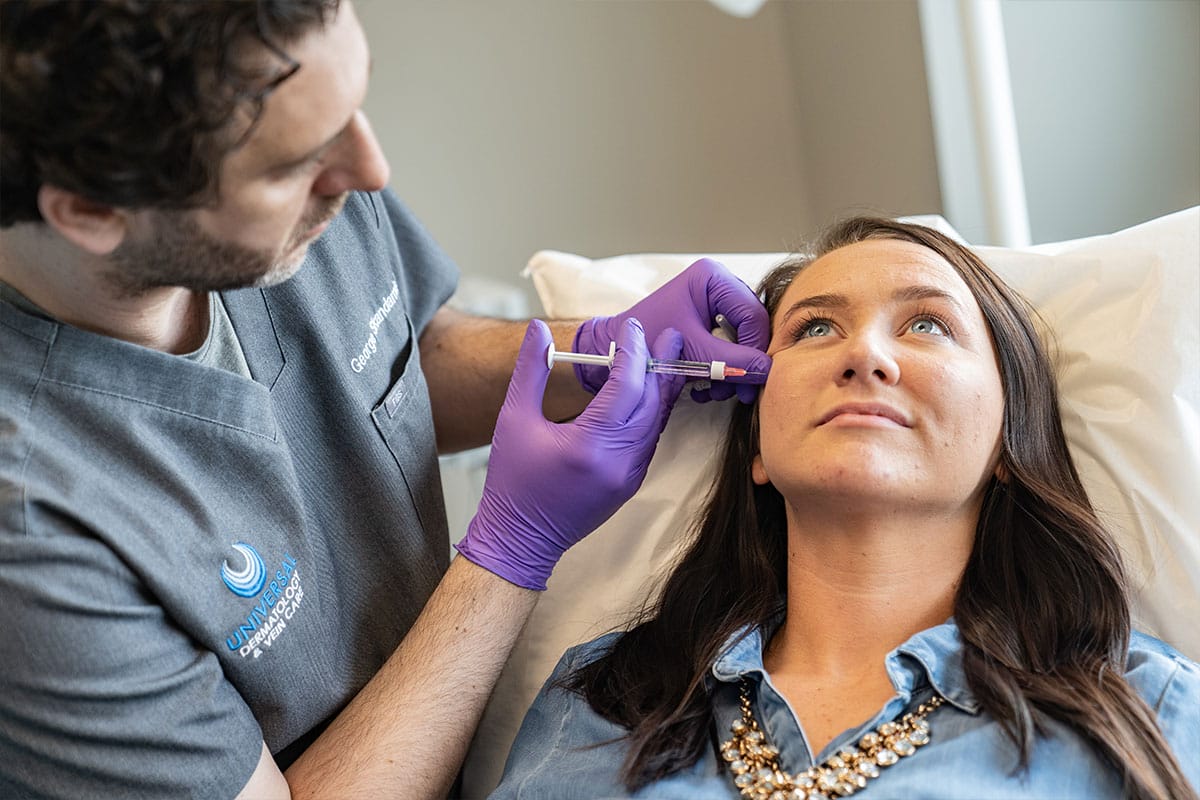 Financing
Financing Pay Bill Online
Pay Bill Online